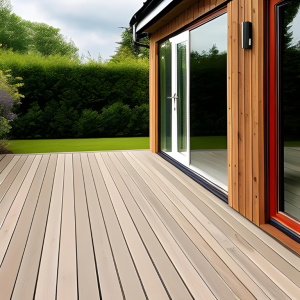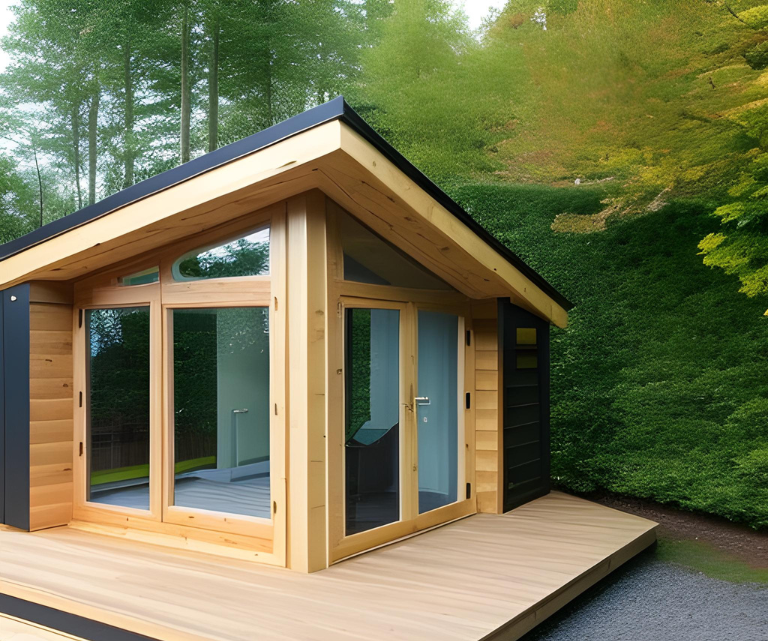What is the best flooring for a summer house?
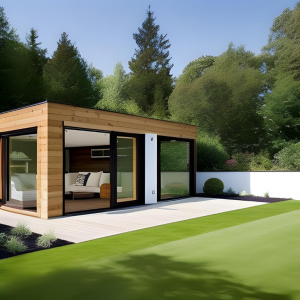
Selecting the ideal flooring for your summerhouse hinges on your intended usage patterns. If you anticipate utilizing the space predominantly during warm and damp weather, a straightforward plywood floor, treated for waterproofing, could be a prudent choice.
In situations where the summerhouse is likely to be frequented during wet periods, a vinyl or laminate floor emerges as a pragmatic alternative. Both options possess inherent waterproofing attributes, bolstering their protective qualities.
Easy eradication of water puddles is an added advantage. Consider harmonizing the wood tone with the overall architectural theme for enhanced aesthetic cohesion.
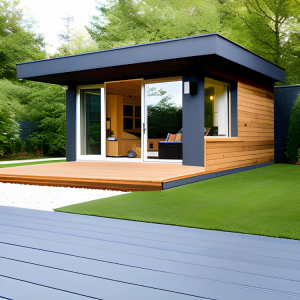
For those who envisage year-round utilization, regardless of inclement weather, a resilient and water-resistant flooring becomes imperative, capable of withstanding the consistent influx of damp or muddy footprints.
Furthermore, if your furry companions, be they feline or canine, seek refuge within the summerhouse during rainy spells, the prospect of damp and soiled paw marks looms large.
For enduring sturdiness and water resistance, vinyl flooring stands out as an apt choice. While laminate flooring might prove suitable in specific instances, it is advisable to seek validation from the manufacturer prior to installation.
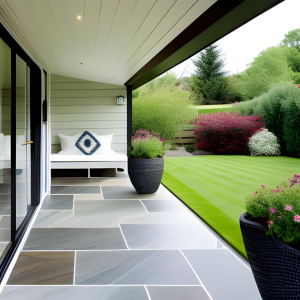
Can you put lino in a summer house?
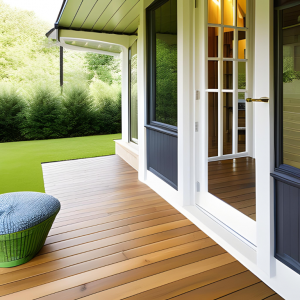
Lino, or linoleum flooring, can indeed be installed in a summerhouse, although over time, there might be a tendency for it to separate. Linoleum is typically supplied in sheet form, tailored to fit the dimensions of the floor area during installation.
This process involves adhering it firmly to the floor by applying adhesive along the edges. Notably durable and resilient, linoleum is known for its robustness.
However, there’s a challenge when it comes to timber constructions like summerhouses, due to the natural expansion and contraction of wood throughout the seasons. As the wood responds to changes in humidity, it absorbs or releases moisture, resulting in slight movements.
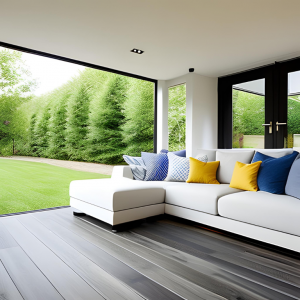
This recurring movement can pose a problem for linoleum flooring, which is custom-fitted and affixed in place. The wood’s fluctuations could cause the linoleum to detach from the floor as the underlying floor space shifts or experiences minor dimensional changes.
This phenomenon is particularly evident around the edges of the summerhouse floor, where the linoleum might no longer align perfectly against the walls.
Considering these factors, the compatibility of linoleum flooring with a summerhouse environment warrants careful consideration, given the potential challenges posed by the natural movement of the wooden structure.

Can you tile a summer house?
Certainly, plastic tiles emerge as an economical roofing option for your summerhouse, offering a range of stylistic choices suitable for various garden structures. Notably lightweight, these roofing materials can be effortlessly installed by interlocking the tiles.
Attaching them securely to purlins using recommended screws allows for overlapping, ensuring a watertight seal.
However, it’s important to note a couple of drawbacks associated with these tiles. They exhibit a lack of environmental friendliness and might have an unpredictable lifespan due to limited testing.
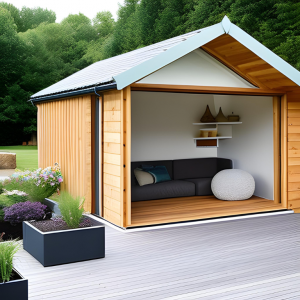
Plastic tiles present a viable short-term solution for summerhouse roofs, although they might not excel in terms of aesthetic appeal.
In summation, plastic tiles offer an affordable and relatively straightforward approach to roofing a summerhouse.
While providing practicality, it’s essential to be mindful of their environmental impact and potential longevity, factors that could influence their suitability for your project.
Should I insulate my summerhouse floor?
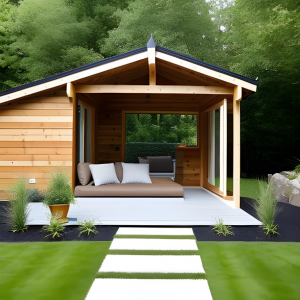
Insulating your summerhouse floor holds several advantages, contributing to both energy efficiency and environmental responsibility.
While alternative options like heaters and fans can be employed if an electricity supply is available, insulation emerges as a prudent choice for maintaining moderate energy costs and reducing your carbon footprint.
Opting for insulation can yield benefits beyond just temperature regulation. Notably, double-glazed windows stand out as a favored means of insulation, requiring no extensive construction or exorbitant expenses.
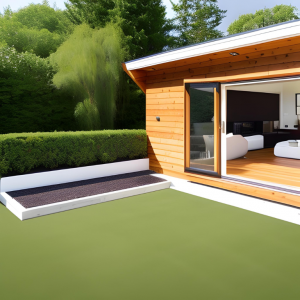
These windows not only enhance thermal retention but also offer unobstructed views of the surrounding outdoors, allowing you to stay connected with nature.
Delving into the specifics of insulation materials and their strategic implementation is crucial for optimal outcomes. Addressing roof and floor insulation as initial priorities helps eliminate drafts and sustains year-round comfort within your summerhouse.
Furthermore, insulating the walls ensures enduring warmth during colder months and maintains a pleasantly cool interior when summer arrives.
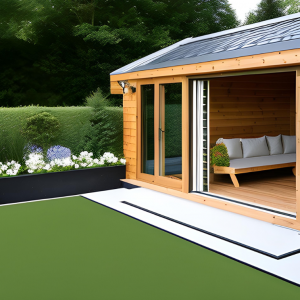
By selecting from various insulation types, such as extruded polystyrene or other resilient foam materials, you can forge an energy-efficient and enduring summerhouse.
The inclusion of insulation substantially enhances the longevity of your structure, making it a worthwhile investment for a durable and comfortable retreat.
Ultimately, the decision to insulate your summerhouse floor proves to be a pivotal step towards creating a resilient, eco-conscious, and comfortably habitable space.
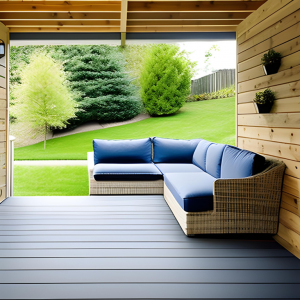
What flooring absorbs the most heat?
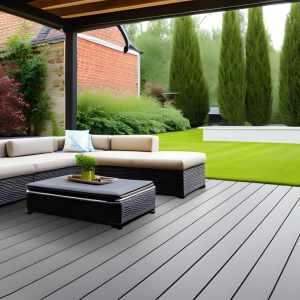
Concrete, renowned for its dense composition and impressive thermal mass, has transcended its conventional usage and garnered popularity among eco-conscious builders and homeowners.
Its elevated environmental friendliness and minimal maintenance requirements have propelled it into the realm of home construction materials.
Concrete, once an unconventional choice, can now be appreciated for its versatility in home decoration. It readily accepts stains, transforming into a diverse spectrum of hues, and lends itself to embellishment with decorative elements, stencils, and various finishes.

Maintenance is simplified, as sealing renders it resistant to harm and staining. Furthermore, concrete’s adaptability allows for the incorporation of intricate patterns, captivating designs, and other distinctive accents.
To heighten its eco-friendly appeal, concrete options enriched with fly ash, a combustion residue, are available. For an added aesthetic dimension, some manufacturers infuse recycled glass, infusing colors and visual allure.
In summary, concrete, with its innate thermal attributes and diverse decorative potential, emerges as an exceptional flooring choice that not only absorbs heat effectively but also contributes to a sustainable and visually captivating living space.
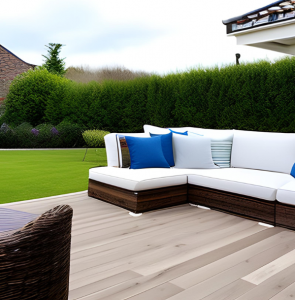
Does humidity affect vinyl flooring?
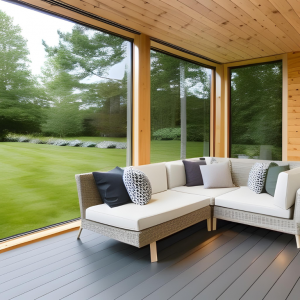
The presence of humidity can exert noticeable effects on your vinyl plank flooring over time.
It is advisable to closely monitor humidity levels using a hygrometer, a relatively affordable tool that can potentially prevent the need for future costly flooring replacements.
Employing a portable dehumidifier proves beneficial in mitigating discomfort caused by excessive humidity, safeguarding both your well-being and the condition of your floor.
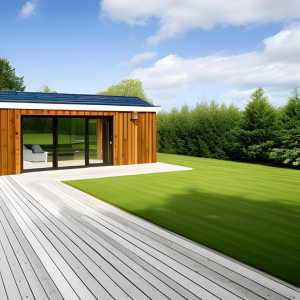
Vinyl, crafted from synthetic components like fibreglass, PVC, and plasticizers, boasts a robust structure due to its multiple layers, yet maintains a pliable, rubber-like texture.
However, it is susceptible to fluctuations in size due to environmental factors like humidity, temperature variations, and sunlight exposure.
These elements trigger expansion and contraction, causing the vinyl to shift in dimensions from its original installation. This phenomenon applies to both luxury vinyl tiles and sheet vinyl and is a natural occurrence.
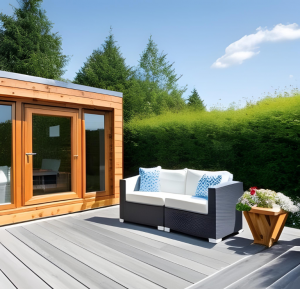
To accommodate these changes, vinyl is typically fitted slightly smaller than the room’s perimeter during installation, allowing space for expansion during warmer periods.
Silicone sealants along the edges help conceal any minor shrinkage that may occur in cooler conditions.
The intrusion of sunlight through windows can induce uneven effects on the vinyl’s appearance, impacting only specific areas rather than the entire surface.
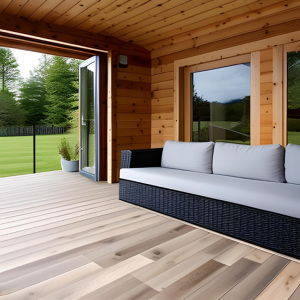
However, vinyl flooring treated with a protective UV layer can mitigate this concern to a considerable extent.
While complete prevention of sun-induced effects isn’t guaranteed, the application of UV protection substantially reduces their intensity and pace.
In summary, humidity does indeed influence vinyl flooring, and awareness of its effects, along with appropriate preventive measures, contributes to the longevity and aesthetics of your vinyl flooring investment.
